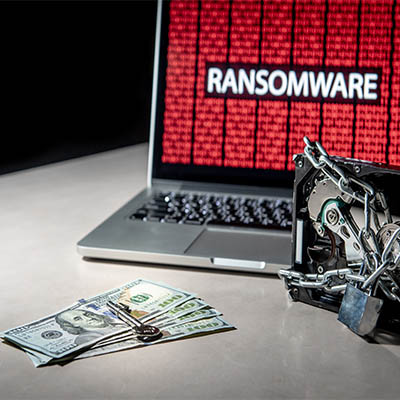Email is a hugely useful business tool, which is what makes solutions like Microsoft Outlook so popular in today’s organizations. Having said that, it can become far too simple for the inbox to be overstuffed with outdated and unnecessary messages that ultimately serve little more than to hide the ones you need to review. Did you know that there’s a capability built into Outlook that can help you keep track of your important messages? Let’s go over how you can use it.
Ransomware attacks are notorious for their expense to the victim—largely because of the various costs that come along with successful ransomware infections, including many that might not be expected at first. Let’s review some of these costs, if only to reinforce the importance of avoiding ransomware as a rule.
For a considerably long time—over 40 years—Apple has staked the claim that their devices are pretty much hack-proof, that most hackers wouldn’t even try breaking into their security measures. Law enforcement was so repeatedly rebuffed by the company as they sought workarounds to get into their devices, that these law enforcement agencies figured it out for themselves. In doing so, they uncovered a few things that even the most ardent Apple fans may be surprised to hear.
We’ve all received those emails that have some level of sensitive data in them, and we’ve all sent our fair share of them as well. However, one almost has to wonder—how secure is this data as it sits around in someone’s inbox?
With a business’ inventory playing such an important role in so many business operations, the capability to manage it properly can be seen as indispensable. Fortunately, there are plenty of tools to help make your inventory management much simpler than it once was. Let’s take a few moments to consider three such tools, and how they are being used now.
With the considerable costs that a business’ hardware investments can bring, it only makes sense to identify any means to optimize these costs available. One very effective means of doing so is to adopt a virtualized environment, either hosted onsite or in the cloud. Let’s take a few moments to consider how virtualization can benefit your organization.
With computers being so integral to modern life, it can be too easy to hear about certain drawbacks—like the purported impacts of blue light—and discount them as little more than a way for companies to sell things that nobody really needs. While we aren’t going to speak to all these presumed drawbacks, we did want to spend some time discussing blue light and how it could impact your health (and how to help keep it from doing so).
For the small, but growing business, there are a lot of risks that could potentially harm their ability to stay in business. One of those risks comes in the form of cybercrime. Over the past several years, small and medium-sized businesses (SMBs) have improved the ways in which they combat cybercrime. Let’s take a look at some of the problems SMBs have to deal with.
Businesses are using more remote workers than ever. The COVID-19 pandemic made it necessary for them to react and they did, but it has proven to have a handful of challenges. One of the most stark issues that remote workers face is the assault on their mental health. Most newly-remote workers once held several conversations with co-workers day-in and day-out and being isolated for 12 months has taken its toll. This shift is having negative effects on businesses from all over the world. Let’s take a look at a couple of things that you can do about it.
Workplace burnout has been discussed quite a bit in the last year—which in and of itself seems funny, considering how relatively little time many people spent in the workplace this past year or so. However, just because the conventional workplace was altered doesn’t mean that the potential to experience burnout has been at all.










